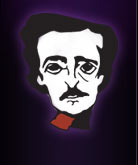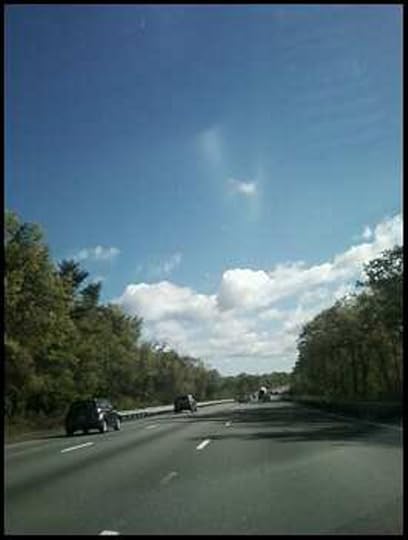Terry Odell's Blog, page 251
September 4, 2012
Platform
Today my guest at Terry’s Place is Linda Gordon Hengerer. Linda is a member of Mystery Writers of America-Florida Chapter. She has co-chaired SleuthFest, their annual writers conference, for the past four years.
The first book I wrote was non-fiction, and I have written several articles for one of our local papers; all use my real name. I’ve been working on a mystery series and a fairy story, and thinking about the platform for each.
It used to be enough to write a great story. Now, in addition to writing a great story, an author must also provide a platform. If you are a new author a publisher wants to see what you are doing (or will do) to help get the word out about your book, and how many prospective buyers you may have. If you are an established author, a publisher wants to see that you are engaging your readers to keep them interested in your series or standalone books between releases.
What is platform? It is everything that you do to present and market yourself to the public, especially potential buyers. Platform includes your website, your blog, your social media presence (Facebook, Twitter, Pinterest, etc.), and any live presentations you do (workshops at conferences, classes, TV and/or radio). It also includes guest blogging on other author’s blogs, such as Terry’s Place.
Every post, tweet, or pin won’t be an active request to buy your book, but it should tie in to your brand. What is your brand? It is who you are as an author. Do you write cozies? Horror? Mysteries? Thrillers? Romance? Paranormal? A mix of any of these, or something else? Your website should reflect your brand. A romance author’s website should not have the same feel as a mystery author’s; you want the website to evoke the tone of your books.
Nora Roberts is a well-known romance author who writes straight romance, romance with paranormal aspects, and romantic suspense. Under the pseudonym J. D. Robb she writes a futuristic suspense series. Her brands and websites are different for each author name, although you can access each one from the other’s website. You know that a Nora Roberts story is essentially a romance, and you know that a J. D. Robb story is essentially suspense. If you like both, you know that under either name she delivers great stories with wonderful characters. If you want to read romance, Nora Roberts is your girl. If murder and mayhem are your cup of tea, then J. D. Robb is a go-to author.
If you feel strongly about writing in different genres, keep in mind that you may be splitting your potential audience for one genre. Publishers like to see an author polishing their skills in one genre, so they can build an audience in that area. J. D. Robb had established herself as an author of futuristic suspense with 11 stories over six years before the publisher revealed that Nora Roberts was writing under a pseudonym with the release of the 12th story in the series.
Writing in different genres will also increase your non-writing work; if you develop separate brands and platforms, you’ll spend time updating each one. You don’t want to take too much time away from writing, and hiring someone to do some non-writing work is an option. Your best time is spent writing the stories your readers want more of.
For more about Linda, visit her website, for links to her non-fiction books about football and wine; check back to see the links to her mystery and fairy stories. Her blog about her perspective on life as a Jersey girl living in Florida is here. She also blogs about football here.
September 3, 2012
MWA #6 — The Writer’s Life
And, lastly — scroll to yesterday’s post for the link to my books at All Romance eBooks. Most of my full-length novels are half price today.
This marks the last session recap from the Mystery Writers of America University in Denver. Hank Phillippi Ryan, a on-air reporter with 27 EMMYs to her credit, decided her true calling was writing. She shared her path, including numerous rejections, but concluded the program on an upbeat note. Here’s what she’s learned:
Authors have doubts. It’s normal.
Write from experience—but it doesn’t have to be yours.
Your first draft will be terrible
Be ready for the 40,000 word slump.
There is no right way.
You’ll be alone a lot of the time. Enjoy it.
Don’t underestimate how hard it’s going to be to take criticism.
Rejection isn’t always about the book.
Listen to your inner voice, but don’t get stampeded.
Keep track of your book’s world.
Don’t rush. If you’re in doubt, don’t submit yet.
Save time and brain space for promotion.
Expect the unexpected.
Get ready for a wild and crazy ride.
Don’t put off celebrating. You never know what’s good and what’s bad.
I hope you’ve enjoyed these recaps. If you did, I hope you’ll share them.
Tomorrow, my guest is Linda Gordon Hengerer, and she’s talking about having a platform.
September 2, 2012
Labor Day Special

I’ve decided to mark down almost all my full-lengh novels at All Romance eBooks this weekend. Get 50% off at checkout. No coupon needed. Happy Labor Day Weekend!
Sale runs through Monday.
August 31, 2012
Friday Field Trip — Playing With GIMP
Thanks to Margaret Fieland for stepping up with some interesting change-of-pace photos today. Here’s what she had to say about them: I took the original photos with the camera on my mobile phone, then uploaded them and manipulated the colors using GIMP. The color menus offer a wide variety of choices for playing with the colors. I was aiming for other-worldly, un-photo like. Some of these photos are collages that created by cutting and pasting parts of manipulated photos into a newly created image, which I then saved.
 Have a nice weekend, everyone!
Have a nice weekend, everyone!
August 30, 2012
MWA #5 — Writing as Re-Writing
Continuing my series of recaps of MWA-University in Denver, July 11, 2012.
 The next presentation was given by Reed Farrel Coleman, an author and adjunct professor of English at Hofstra University.
The next presentation was given by Reed Farrel Coleman, an author and adjunct professor of English at Hofstra University.
Coleman began by telling us there is no such thing as wasted writing. Writing is putting words on a page or screen. They should be the best words you can produce. Also, he warned us against confusing our writing with our children. Unlike our kids, a lot of our words are expendable. For those who feel that they’re not getting it right, and that a day’s output might be considered a waste of time, he pointed out that if you want to get better at something, you actually have to do it. Your time is not wasted.
Next, he told us that we should be falling in love with writing, NOT with what we’ve written.
Editing, he went on to say, makes weak writing stronger, fair writing good, and good writing great.
He talked about two types of writers: Spewers and Writetors. Spewers write straight through, and Writetors write, then edit; write more, then edit.
He shared his technique when starting a new book. He writes his pages. The next morning, he starts on page 1, edits those pages, and then continues. On day 3, he again starts at page 1, edits, and then continues. He does this until he has 50 pages of manuscript. By then, he’s internalized the story, and each day gives him a running start and a feel for where he is in the book. This also ensures that your beginning will be as strong as it can be.
He encouraged us to read our book aloud, even if it’s just to the dog. (Aside: mine leaves the room, and I’m not sure how to interpret that). And, he added, aloud means aloud. No fair moving your lips and listening to your internal voice. By reading aloud, you’ll hear clunky language and catch grammatical errors. (Aside – I didn’t do this with my first book, and when I had to do a dreaded “reading” and practiced, I found a real clunker in the opening paragraph. Yikes. At least it’s now fixed in my indie version.) Reading aloud gives you a sense of rhythm as well. He point out that the basic “foot” of the English language is the iamb (remember iambic pentameter from high school?). That rhythm resonates with us because it’s the rhythm of our heartbeat.
Next, read aloud to a real person. No pets this time. For this pass, it’s not critical that your audience knows your genre.
Find three trusted first readers (one of whom may be the person to whom you’ve already read the book). At least one of these three should be a more experienced writer than you are.
Lastly, he warned against being quick to change based on a single criticism. If we have doubts about our writing, we’re going to be bothered by criticism.
He then gave 15 things to look for when editing. I’ll simply list them here, although he did elaborate on them. If you have questions, ask in the comments, and I’ll see if I can respond.
1. Entertainment value
2. Clunky/awkward language
3. Confusing language or plot twists. (In a mystery, misleading the reader is okay, but it’s never right to confuse them.)
4. Run-on sentences and sentence fragments; other grammatical errors. (I happen to use a lot of fragments, but that’s my voice and it doesn’t bother my editors—and no reader has complained—yet.)
5. Punctuation.
6. Overwriting
7. Plot and character inconsistencies.
8. Inconsistencies in setting (which includes time as well as place – I’ve seen books set in the present where people are shooting pictures with film, for example.)
9. Inconsistencies in tone
10. Dialogue
11. Pacing
12. Facts/research
13. Emotional resonance
14. Thematic resonance
15. Entertainment value!!!
August 29, 2012
What’s Cooking Wednesday — Seafood pasta with mint-pistachio pesto
While I was in Los Angeles, my brother, Mark Carter, (a former restaurant chef) was in charge of cooking. Needless to say, we ate very well. The last two weeks, I posted recipes using the ‘traditional’ pesto made with basil and pine nuts. But, “Pesto” means “Paste” and you’re not restricted to those ingredients. Mark prepared a pasta dish using a mint-pistachio pesto, and it was fantastic. Here’s the recipe, in both the “original” state and then with the adaptations my brother made.
Seafood Pasta with Mint-Pistachio Pesto
Ingredients:
For the pesto:
1 ½ c shelled pistachios
1 large clove garlic
¼ t hot red pepper flakes
1 t coarse salt
1 ½ c packed fresh mint
½ c Olive oil
For the pasta
2 7 oz jars/cans of good quality tuna. Ahi tuna
1 c cherry tomatoes, halved lengthwise
3 T capers
1 lb. linguini
Instructions:
Make pesto by putting pistachios, garlic, pepper flakes, salt, and mint into a blender or food processor. Process, adding olive oil until it’s a smooth paste.
In a separate bowl, mix the tuna, cherry tomatoes and capers.
Cook the linguini. Drain, and toss with the tuna, tomatoes and capers. Add enough pesto to coat. If it seems too dry, you can add 1–12 T of the pasta water. Leftover pesto can be stored in a sealed container. Cover the top with a little olive oil to keep it from darkening.
Mark’s adaptation:
Instead of canned tuna, he bought about 3/4 a pound of ahi tuna. Any fish that will flake will do (or, you could even use chicken, which my mother prefers over seafood.)
He poached the tuna in about 1/4 c of olive oil at a low temperature, spooning some of the oil over the top while it cooked. Cook it about halfway, then flip it over. It shouldn’t brown. Cooking it slowly meant it would flake easily. He removed the tuna and all but about 1–2 T of the oil and sauteed the tomatoes to soften them. He also hates capers, so he left them out.
My non-fish-loving mother thought it was fantastic, although she did plan to use chicken when she made it again. The pesto recipe made enough pesto to do the whole thing again.
August 28, 2012
Movies: Adoration or Addiction
Today I welcome author Vicki Batman to Terry’s Place. Like some of her characters, Vicki has worked a wide variety of jobs including, among others, lifeguard, ride attendant at an amusement park–she claims the list is endless. She says most of her days begin by sitting at the keyboard wondering what if?
I freely admit I love movies. Can’t stand those with tons of computer stuff. Not into creepy horror. Like romance, a good thriller, an action/adventure like Indiana Jones.
I adore old movies. As a kid, our family had one television and it had four channels and a local station. The local station played reruns from classic sitcoms, a couple of kids shows, and regularly aired old, mostly black and white, films. That’s where I discovered Cary Grant, William Powell (The Thin Man rocks), Irene Dunne, Myrna Loy (incredible chemistry with William Powell & Cary Grant).
I know people who won’t even look at a black and white movie and can’t understand that at all. Sure, some of them move a little slower than those of today or don’t have the CGI stuff. However, can’t they look a little deeper? Study the unique lighting techniques. Or how about the inventive costuming? The incredible dialogue. The actor’s facial expressions. Cary Grant was a master at showing humor in his.
A lot of the early talkie actors got their start in silent movies. Silents focused on the faces which reflected the emotions of the characters. One raised brow. A twitch at the mouth. A single tear cascading down the cheek. It’s different in today’s flicks. Rarely, do I want to cry along with the actor.
The other day, Handsome Hubby and I watched “Crisis” with Cary Grant, Jose Ferrer, and Jeanne Crain. Blurb: A vacationing doctor is kidnapped to tend to an ailing dictator.
Wow, does that seem relevant today. Who knew?
Or how about a good Hitchcock film, like “Lifeboat.” Blurb: Passengers from a sinking ocean liner are stuck on a lifeboat and deal with a bent-to-kill German intent on finding his submarine.
That movie showed the real side of people. (Don’t forget to check out Hitchcock’s “Rear Window” and “Vertigo.”)
And who hasn’t watched “It’s a Wonderful Life?” I get all sobby in my chest when the little girl remarks, “Teacher says every time a bell rings, an angel gets his wings.”
Westerns anyone? Who has watched “The Searchers” with John Wayne? Set in the Western era, he is searching for a kidnapped girl (Natalie Wood), the story based on the Cynthia Parker kidnapping in Texas. There’s a scene when John Wayne walks out of a house, his silhouette is shaded and beyond him is the bright light of a new day, a technique used in “Silverado” with Kevin Kline and Kevin Costner.
One that is often billed as a romance, but is in fact, a psychological thriller is “Rebecca,” also a fantastic book by Daphne du Maurier, and starred Laurence Olivier and Joan Fontaine. Here’s the blurb: When a naive young woman marries a rich widower and settles in his gigantic mansion, she finds the memory of the first wife maintaining a grip on her husband and the servants. Yes, it starts all lovely dovey, the couple marries which rescues her from companionship to an odious woman. And yes, they live happily ever after. It’s the in between parts which make the movie suspenseful.
And finally, something interesting–this year, the Golden Globes’ best film went to “The Artist,” a black and white, and silent.
From these movies, writers can draw on the actors to describe how they conveyed emotions in their actions and on their faces. How they moved. Reactions. Even setting and clothing.
So what do you think about black and white films? Do you have a favorite? Or are you of the “can’t stand ‘em” school?
For more about Vicki, you can find her at her website; Facebook and at MuseItUp Publishing Look for her short stories, including Store Wars.
August 27, 2012
MWA #4 — Character
 Continuing my recaps of the Mystery Writers of America University sessions, I’ll talk about character. This session was presented by Laura DiSilverio, who writes the Mall Cop mystery series and the Swift Investigations PI series.
Continuing my recaps of the Mystery Writers of America University sessions, I’ll talk about character. This session was presented by Laura DiSilverio, who writes the Mall Cop mystery series and the Swift Investigations PI series.
Laura’s first point was to make sure to avoid stock or expendable characters. They’re cardboard, and nobody’s going to care about them.
Her next point was that characters come from within you. You have to be willing to find and exploit the emotions you have inside. You don’t have to experience what your character does, but you can draw upon emotions.
To demonstrate this, she asked us to think about a shameful moment in our lives, and then examine our physical reactions. Was it a heart-pounding moment? Skin-crawling?
Next, she had us consider the environment. Hot, cold? Dark, light? Comfortable? Were you alone or in a group?
She suggested that we focus on one area of the environment. Does encountering that environment put you back in the shameful moment. Transfer that feeling to a character in your book.
Character names are important as well. They can give the reader the first indication of the character’s age, ethnicity, economic status, personality, gender, etc. It’s not likely a character named Tiffany was born in 1945. You can use a baby name book or simply do an internet search for popular names of any given year.
You should know what your character looks like, even if you don’t describe him or her on the page. A lot of authors (myself included) prefer to be vague so the reader can envision the character for him or herself. Also, the genre you’re writing can make a difference in how much physical description you give. Usually, you’ll describe the character at his or her first appearance, but you might delay it for effect. She gave an example where one character described her lover in glowing terms, and then tacked on how her parents would see him only by his color. Until then there was no mention of his ethnicity.
She stressed “sprinkling” rather than stopping the action to describe a character. Also, she advised that we use details that tell more about the character than hair and eye color.
If you write 1st person, it’s often difficult to have a character describe herself. Comparisons can work well here—“he was a good six inches taller than my five-foot-three” for example.
Readers should know what characters think. Internal dialog is useful for this. She also warned that actions can be a much stronger means of revealing character, so we should avoid too much thinking. What characters do matters more than anything else in the reader’s perception of them.
The verbs associated with a character will also say a lot. Another thing to think about: are the verbs at the beginning the same as those at the end? If they are, your character probably hasn’t changed much. You need a character arc, which she defined as “the path—usually filled with ups and downs, reversals, dead stops—that a character travels over the course of a book or series to emerge somehow different (usually) at the end.”
Your protagonist shouldn’t be strong enough to defeat the antagonist early on. And if you’re writing a series, you need antagonists that challenge different aspects of your protagonist.
There are some successful series that don’t show a lot of change—she mentioned Janet Evanovich’s Stephanie Plum, and Jessica Fletcher of “Murder, She Wrote.” Whether you’re writing series or stand alone will also affect how much your character grows or changes. Her advice: L eave room to grow. When in doubt, go slowly.
Other characters’ perspectives are also a good way to show character. The reliability of your POV character is important.
You need to know why your character does the job he or she does. Since this was a mystery writers class, DiSilverio’s examples fit the genre. Why is your hero a cop? Or a PI? Or an amateur sleuth? If he’s a cop, is he acting on orders? If he’s a PI, is it for money? And why would your amateur sleuth leave her normal life to solve a crime?
Tomorrow, my guest is Vicky Batman, and her topic is: Movies — Adoration or Addiction?
August 24, 2012
Friday Field Trip — Pikes Peak Hill Climb
Jason’s back with a different kind of field trip today. I’ll let him tell you about it.
But before he does, I want to wish Hubster a very happy 43rd anniversary.
OK — here’s Jason:
I had the opportunity to photograph some of the practice runs for the 90th annual Pikes Peak Hill climb, an auto race to the top of Pikes Peak. There are no guardrails, just a mountain on one side and a cliff on the other. When you don’t make a turn correctly, this is what can happen: (both driver and navigator were OK!).
[image error]The race starts on the Pikes Peak Highway, just off US Highway 24 near Manitou Springs. The 12.42 mile course starts at 9,390 feet and ends at the summit at an elevation of 14,110 feet. The best racers are able to make it up the course in roughly ten minutes. From an automotive standpoint, the challenge of this course is not only the winding road, but the drastic change in elevation, making things like tire pressure and engine tuning extremely important.
I was at the practice run as a guest of one of the drivers, Jeff Denmeade, who brought a custom-built car from Australia to participate in the race. He was able to complete the course in 11:19, which was good enough for third in his class. This year’s overall winner finished the climb in 9:46:164.
You can learn more about the Pikes Peak Hill Climb here
Lots more pictures below
For more about Jason, visit his website.
Have a great weekend, everyone!
August 23, 2012
MWA #3 — Setting and Description
 Continuing with recaps from the Mystery Writers of America University presentations, I’m sharing Rex Burns’ lesson on Setting and Description.
Continuing with recaps from the Mystery Writers of America University presentations, I’m sharing Rex Burns’ lesson on Setting and Description.
In his opening remarks, he told us “Story is number one. It’s how you tell it.”
First, he defines setting as “the time and location of an action” and description includes the means of picturing that setting for the reader. He also stressed the importance of setting in a mystery because, “that’s where the clues are.”
Uses of description include supporting the theme of the story, which may include symbolism.
(My aside is that I’ve never consciously thought of symbolism in my work, and this usage takes me back to my high school teacher, Mr. Holtby. We were always tasked with finding the meaning behind the story, and one student finally asked him if authors actually tried to write that way. His answer, which has stuck with me and kept me from despair when I’m trying to think of my work as anything but shallow dreck, was “Probably not, but when he’s looking for the right word for a sentence, that’s going to be the one that fits.”) End of my take. Back to Mr. Burns.
Burns went on to mention other uses of description – to further the action, to pace the action, to modulate the story’s mood, and to reveal character. The world fiction authors are writing about it a fictional one, yet it’s their job to make that world real to the reader for the duration of the story. Description is one of the most compelling devices to this end.
Another aside – Mr. Burns is a professor of creative writing and English, so his talk was filled with “definitions” of things. Whether we give it a label or not, the technique is there.
He suggests the use of “imagistic compression” and gave examples of keeping imagery short, especially in mystery, to leave room for action and character development. As Chekov said, ” Don’t tell me the moon is shining; show me the glint of light on broken glass.”
When more detail and description is warranted, he suggested moving from the general vista, or a broad view, to a particular image that emphasizes a key quality of the scene. The author’s job is to orient readers without being obtrusive.
In a mystery novel, description can further the action by placing clues in the setting. A fingerprint, a puddle of water, or a book out of place. He also suggests the use of metaphor and simile, although he warns to use them sparingly.
Pacing can be anything from where you place chapter breaks to how long your paragraphs are. Short descriptive passages can also pace the story’s flow. You don’t want to divert the reader’s attention, but rather broaden it.









